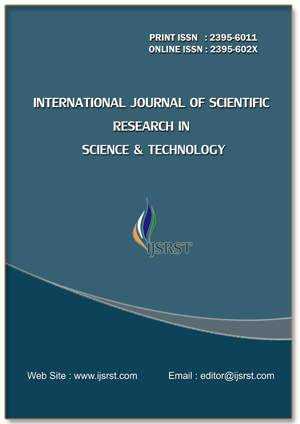Performance Evaluation of Millimeter-Wave Massive MU-MIMO for High-Efficiency Wireless Communications in Underground Mines
Keywords:
Millimeter-Wave (mmWave) Communication, Massive MU-MIMO, Underground Mine Wireless Networks, Channel Propagation Modeling, Spectral Efficiency Optimization, Path Loss and Delay Spread AnalysisAbstract
This study investigates the performance of a large multiuser multiple-input multiple-output (MU-MIMO) millimeter-wave (mmWave) communication system in an underground mine environment using a base station equipped with 128 antennas. The analysis is based on channel measurements conducted at 28 GHz, where a virtual antenna array at the base station serves multiple users. Key channel parameters, including large-scale path loss, temporal dispersion, coherence bandwidth, and sum-rate capacity, are examined and evaluated. The findings indicate that a multislope path loss model provides a more accurate representation of path loss across different propagation segments within the mining gallery. The time dispersion analysis reveals that 90% of the root-mean-square (RMS) delay spreads are below 4 ns, suggesting minimal time dispersion in the underground mine channel. Additionally, the results demonstrate that the RMS delay spread remains independent of the propagation distance. The sum-rate capacity analysis highlights the potential of massive MIMO technology in enhancing spectral efficiency. The study shows that the achievable capacity can reach up to 33.54 bit/s/Hz with eight active users. The unique characteristics of deep mine environments, such as rich scattering and irregular topology, are also discussed. These results provide valuable insights into the propagation behaviour of mmWave channels in underground mines, contributing to the optimization of wireless communication systems in such challenging environments.
📊 Article Downloads
References
W. Roh, J. Seol, J. Park, B. Lee, Y. Kim, J. Cho, K. Cheun, and F. Aryanfar, "Millimeter-wave beamforming as an enabling technology for 5G cellular communications," IEEE Commun. Mag., vol. 52, no. 2, pp. 106–113, 2014.
A. L. Swindlehurst, E. Ayanoglu, P. Heydari, and F. Capolino, "Millimeter-wave massive MIMO: Challenges and solutions," IEEE Commun. Mag., vol. 52, no. 2, pp. 56–62, 2014.
T. L. Marzetta, "Noncooperative cellular wireless with unlimited numbers of base station antennas," IEEE Trans. Wireless Commun., vol. 9, no. 11, pp. 3590–3600, 2010.
S. W. Nam, Y. A. Hur, J. Park, B. L. Ng, K. Kim, and J. Y. Seol, "Full-dimensional MIMO (FD-MIMO) for next-generation cellular technology," IEEE Commun. Mag., vol. 51, no. 6, pp. 172–179, 2013.
E. Björnson, L. Sanguinetti, J. Hoydis, and M. Debbah, "Massive MIMO: Thirty years of evolution," IEEE Commun. Mag., vol. 54, no. 1, pp. 10–27, 2017.
F. Rusek, D. Persson, B. K. Lau, E. G. Larsson, T. L. Marzetta, O. Edfors, and F. Tufvesson, "Scaling up MIMO: Ten myths and one truth about massive MIMO," IEEE Signal Process. Mag., vol. 30, no. 1, pp. 40–60, 2013.
J. Choi, D. J. Love, and P. Bidigare, "Antenna selection for millimeter-wave communication systems," IEEE Commun. Mag., vol. 53, no. 1, pp. 86–92, 2015.
L. Liang, H. Ye, and G. Y. Li, "Machine learning for massive MIMO: Opportunities and challenges," China Commun., vol. 16, no. 3, pp. 18–28, 2019.
L. Dai, B. Wang, M. Peng, and S. Chen, "Hybrid precoding for millimeter-wave massive MIMO systems," IEEE Commun. Mag., vol. 56, no. 1, pp. 34–40, 2018.
X. Yu, J. Zhang, and K. B. Letaief, "Alternating minimization algorithms for hybrid precoding in millimeter wave MIMO systems," IEEE J. Sel. Topics Signal Process., vol. 10, no. 3, pp. 485–500, 2016.
X. Gao, L. Dai, Y. Zhang, and Z. Wang, "Energy-efficient hybrid precoding for millimeter wave massive MIMO systems," IEEE J. Sel. Areas Commun., vol. 34, no. 4, pp. 998–1009, 2015.
O. El Ayach, S. Rajagopal, S. Abu-Surra, Z. Pi, and R. W. Heath, "Spatially sparse precoding in millimeter wave MIMO systems," IEEE Trans. Wireless Commun., vol. 13, no. 3, pp. 1499–1513, 2014.
Z. Brady, R. Shrestha, J. Jornet, I. Akyildiz, and W. Lehr, "Multi-gigabit indoor wireless systems using millimeter-wave 60 GHz radios: Challenges and future directions," IEEE Commun. Mag., vol. 51, no. 10, pp. 138–144, 2013.
J. Wang, Z. Lan, C. Huang, and W. Xu, "Scene-specific millimeter-wave propagation modeling for indoor wireless communications," IEEE Trans. Antennas Propag., vol. 62, no. 11, pp. 5797–5809, 2014.
A. Ghosh, T. A. Thomas, M. Cudak, R. Ratasuk, P. Moorut, F. W. Vook, and T. S. Rappaport, "Millimeter-wave enhanced local area systems: A high-data-rate approach for future wireless networks," IEEE J. Sel. Areas Commun., vol. 32, no. 6, pp. 1152–1163, 2014.
S. Rangan, T. S. Rappaport, and E. Erkip, "Millimeter-wave cellular wireless networks: Potential and challenges," Proc. IEEE, vol. 102, no. 3, pp. 366–385, 2014.
A. M. Sayeed, "Deconstructing multiantenna fading channels," IEEE Trans. Signal Process., vol. 50, no. 10, pp. 2563–2579, 2002.
D. Gesbert, S. Hanly, H. Huang, S. Shamai, O. Simeone, and W. Yu, "How much spectrum is enough?" IEEE Signal Process. Mag., vol. 27, no. 6, pp. 38–47, 2010.
D. J. Love, R. W. Heath, W. Santipach, and M. L. Honig, "An overview of limited feedback in wireless communication systems," IEEE J. Sel. Areas Commun., vol. 26, no. 8, pp. 1341–1365, 2008.
J. Hoydis, S. Brink, and M. Debbah, "Massive MIMO in the UL/DL of cellular networks: How many antennas do we need?" IEEE J. Sel. Areas Commun., vol. 31, no. 2, pp. 160–171, 2013.
Hadji, S. E., & Nedil, M. (2024, July). CNN-Based Path Loss Modeling for Massive MIMO System in Underground Mine Scenario. In 2024 IEEE International Symposium on Antennas and Propagation and INC/USNC‐URSI Radio Science Meeting (AP-S/INC-USNC-URSI) (pp. 1849-1850). IEEE.
Li, J., Yue, D.W. and Sun, Y., 2018. Performance analysis of millimeter wave massive MIMO systems in centralized and distributed schemes. IEEE Access, 6, pp.75482-75494.
S. E. Hadji, M. Nedil, M. L. Seddiki and I. B. Mabrouk, "Millimeter-Wave Massive MU-MIMO Performance Analysis for Private Underground Mine Communications," in IEEE Transactions on Antennas and Propagation, vol. 72, no. 2, pp. 1792-1803, Feb. 2024,
Downloads
Published
Issue
Section
License
Copyright (c) 2025 International Journal of Scientific Research in Science and Technology

This work is licensed under a Creative Commons Attribution 4.0 International License.
https://creativecommons.org/licenses/by/4.0




